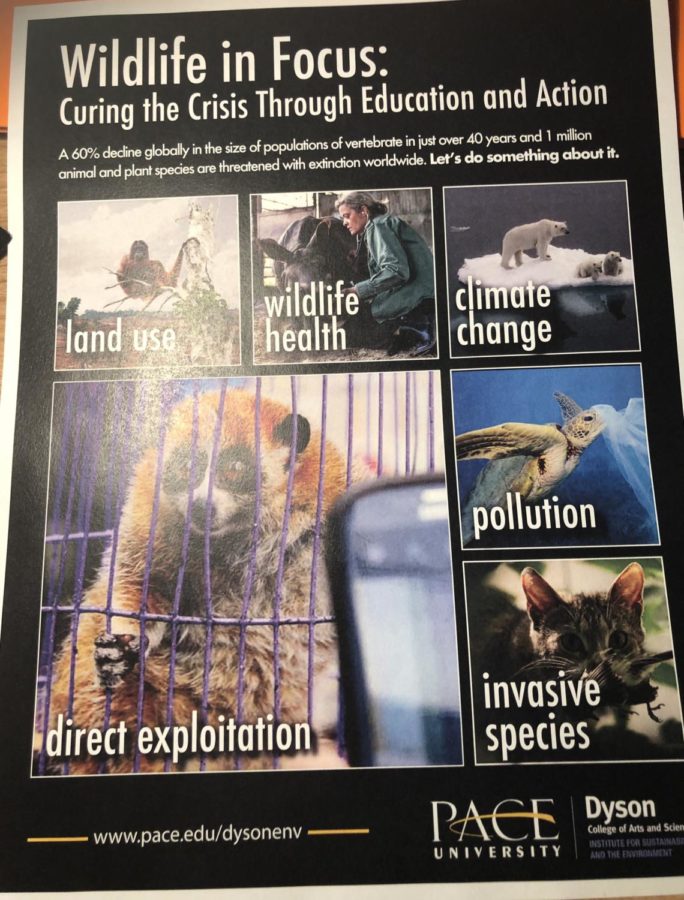Institute for Sustainability and the Environment’s Debut Event Informs Student on the Issue of Poaching
When thinking about the biggest environmental issues facing the globe today, what’s usually the first thing that comes to mind? Some people might say it’s the polar ice caps melting and the global temperature rising at an unparalleled rate. Others might say it’s the enormous deforestation that continues to increase around the world. Still, others might say that it’s the amount of trash and pollution found both on the planet’s land and oceans. But, the illegal killing of rhinos and elephants in the Sahara region might not be the first thing that comes to U.S. college students’ minds when thinking about environmental threats.
In a way, that’s not surprising. With some exceptions, U.S. college students aren’t taught about what goes on in Africa or what happens to the marvelous animals that live there. They had a chance to become educated, however, on Saturday, October 19th, at Dyson College’s Institute for Sustainability and the Environment’s presentation of Kate Brook’s documentary The Last Animals. This was the debut event in the Institute’s series on conservation, titled “Wildlife in Focus: Curing the Crisis Through Education and Action.”
The documentary is about how the poaching and killing of rhinos and elephants in Africa simply to sell their tusks and horns led to the mere extinction of one species and a very significant drop of the other’s population in the wild. The practice is illegal in most countries, and increasing legislation from several countries and constant surveillance by the African military strive to ban the practice completely.
Because of poaching, Northern white rhinos became extinct in the wild in 2007, leaving only four in captivity. Scientists put forth many efforts to try and save the species, including extracting eggs from their uterus and moving them from European zoos to a “sanctuary” in Africa. Unfortunately, the last male of the species died in 2018.
Even though it’s a brilliantly made documentary, some parts of it are very hard to watch, and at times focus on the injuries or deaths of not only rhinos and elephants, but some humans as well.
“[The documentary] is a startling expose on what’s going on with elephants and rhinos in the ivory trade,” said Michelle Land, JD, Pace Associate Clinical Professor and co-chair of DCISE. “We wanted to jolt people into realizing that this is a true crisis. . . that’s why we decided to start [the “Wildlife” series] with that; to get people to sort of wake up and realize what’s happening.”
Land assures people not to worry; the future presentations and discussions in the series won’t be nearly as dark and bleak as The Last Animals was. The next event in the series will be a lecture by wildlife veterinarian Dr. Deborah McCauley, on keeping endangered species healthy in their native habitat, and will be on Wednesday, November 20th, in Willcox Lecture Hall.
U.S. students, or even Americans in general, should not take the information provided in the documentary lightly, because the way things are going, the next animal that could be gone could be a black bear, jaguar, beaver, or any other animal much closer to our home. If we don’t increase wildlife conservation policies soon, as the final words of the documentary say, “humans will become the last animals.”
Your donation supports independent, student-run journalism at Pace University. Support the Pace Chronicle to help cover publishing costs.


